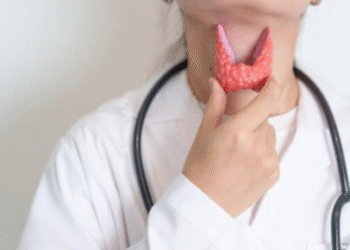1. Pollen: Seasonal Allergens
Pollen from trees, grasses, and weeds can trigger skin allergies, especially during spring and fall. When pollen lands on the skin, it can cause itching, redness, and hives. People with pollen allergies often experience worsening symptoms when they spend time outdoors during high pollen seasons.
2. Dust Mites: Household Allergens
Dust mites are tiny insects that thrive in household dust. Their presence can cause allergic reactions, including itchy skin and rashes. These reactions often occur when dust mite particles come into contact with the skin, especially in areas with high humidity and poor ventilation.
3. Pet Dander: Furry Friend Allergens
Pet dander consists of tiny flakes of skin shed by cats, dogs, and other animals. This dander can cause skin allergies in sensitive individuals, leading to itching and rashes. Regular cleaning, grooming pets, and using air purifiers can help reduce exposure to pet dander.
4. Mold Spores: Damp Environment Allergens
Mold grows in damp, warm areas such as bathrooms and basements. Mold spores can cause skin allergies, resulting in itching and rashes. Keeping these areas dry and well-ventilated, and using mold-killing cleaning products can help prevent mold-related skin allergies.
5. Food Allergies: Dietary Triggers
Certain foods, such as nuts, shellfish, eggs, and dairy, can cause allergic reactions that manifest as itchy skin and hives. Avoiding these foods and seeking medical advice for proper diagnosis and management is essential for those with food allergies.
6. Insect Bites and Stings: Outdoor Triggers
Insect bites and stings from mosquitoes, bees, wasps, and ants can cause immediate allergic reactions, leading to itchy skin, redness, and swelling. Using insect repellents, wearing protective clothing, and treating bites promptly can help manage these reactions.
7. Contact Dermatitis: Skin Contact Irritants
Contact dermatitis occurs when the skin comes into direct contact with allergens or irritants such as nickel, fragrances, and certain chemicals. This leads to itching and rashes at the point of contact. Identifying and avoiding the offending substance is crucial for managing this condition.
8. Latex: Common Irritants
Latex found in gloves, balloons, and medical supplies can cause allergic reactions in some people. Symptoms include itchy skin, hives, and redness. Avoiding latex products and opting for alternatives like vinyl or nitrile gloves can help prevent these reactions.
9. Poison Ivy, Oak, and Sumac: Natural Plant Irritants
Contact with poison ivy, oak, or sumac plants can cause severe skin reactions due to the oily resin urushiol. Symptoms include intense itching, redness, and blisters. Washing the skin immediately after exposure and using over-the-counter treatments can help alleviate symptoms.
10. Fragrances: Beauty Product Allergens
Fragrances in perfumes, soaps, and cosmetics can cause allergic reactions, resulting in itchy skin and rashes. Using fragrance-free products and avoiding direct skin contact with heavily scented items can help prevent these reactions.
11. Nickel: Metal Allergens
Nickel, found in jewelry, belt buckles, and other metal items, is a common cause of allergic contact dermatitis. This leads to itchy skin and rashes at the site of contact. Avoiding nickel-containing items and choosing hypoallergenic alternatives can help manage symptoms.
12. Sunscreen: UV Protection Allergens
Certain ingredients in sunscreens can cause allergic reactions, resulting in itchy skin and rashes. Opting for hypoallergenic, fragrance-free sunscreens and performing patch tests before use can help prevent these reactions.
13. Medication: Drug-Induced Allergens
Some medications can cause allergic reactions that manifest as itchy skin, hives, and rashes. Common offenders include antibiotics, anticonvulsants, and NSAIDs. If you suspect a medication allergy, consult your healthcare provider for alternatives and management strategies.
14. Wool: Fabric Irritants
Wool and other rough fabrics can cause itching and rashes in some people. This reaction is often due to the texture of the fabric rather than an allergic response. Opting for softer, hypoallergenic fabrics like cotton can help alleviate symptoms.
15. Chlorine: Pool and Water Treatment Allergens
Chlorine used in swimming pools and water treatment can cause itchy skin and rashes in sensitive individuals. Showering immediately after swimming, using chlorine-neutralizing lotions, and choosing less chlorinated swimming environments can help manage symptoms.
16. Laundry Detergents: Cleaning Product Allergens
Some laundry detergents contain chemicals and fragrances that can cause skin irritation and allergic reactions. Symptoms include itchy skin, redness, and rashes. Using hypoallergenic, fragrance-free detergents and ensuring thorough rinsing can help prevent reactions.
17. Fabric Softeners: Household Product Allergens
Fabric softeners and dryer sheets can contain chemicals that trigger allergic reactions in sensitive individuals. Symptoms include itchy skin and rashes. Using natural or hypoallergenic fabric softeners and avoiding direct skin contact with treated fabrics can help manage these reactions.
18. Hair Dyes: Beauty Product Allergens
Hair dyes, especially those containing para-phenylenediamine (PPD), can cause allergic reactions resulting in itchy skin and rashes. Performing a patch test before using hair dye and choosing products free of PPD can help prevent these reactions.
19. Henna: Natural Dye Allergens
Henna, a natural dye used for temporary tattoos and hair coloring, can cause allergic reactions in some people. Symptoms include itchy skin, redness, and swelling. Using pure, natural henna and avoiding black henna, which contains PPD, can help reduce the risk of reactions.
20. Tattoo Ink: Permanent Art Allergens
Tattoo ink can cause allergic reactions in sensitive individuals, leading to itchy skin, redness, and swelling. Ensuring that the tattoo artist uses high-quality, hypoallergenic inks and following proper aftercare instructions can help minimize the risk of allergic reactions.
21. Nail Polish: Beauty Product Allergens
Certain chemicals in nail polish, such as formaldehyde and toluene, can cause allergic reactions, resulting in itchy skin and rashes around the nails. Choosing hypoallergenic nail polishes and avoiding direct skin contact with the product can help prevent these reactions.
22. Skincare Products: Personal Care Allergens
Ingredients in skincare products, including preservatives, fragrances, and certain chemicals, can cause allergic reactions in some individuals. Symptoms include itchy skin, redness, and rashes. Opting for hypoallergenic, fragrance-free products and performing patch tests can help avoid these reactions.
23. Soaps: Personal Hygiene Allergens
Soaps and body washes containing fragrances and harsh chemicals can cause allergic reactions, resulting in itchy skin and rashes. Using mild, hypoallergenic soaps and avoiding those with strong fragrances can help prevent these reactions.
24. Shampoos: Hair Care Allergens
Shampoos containing sulfates, fragrances, and other harsh chemicals can cause allergic reactions in some people. Symptoms include itchy scalp, redness, and rashes. Choosing sulfate-free, fragrance-free shampoos and performing patch tests before use can help prevent reactions.
25. Cosmetics: Makeup Allergens
Makeup products, including foundations, lipsticks, and eyeliners, can contain allergens that cause itchy skin and rashes. Using hypoallergenic, fragrance-free cosmetics and performing patch tests before applying new products can help prevent allergic reactions.










